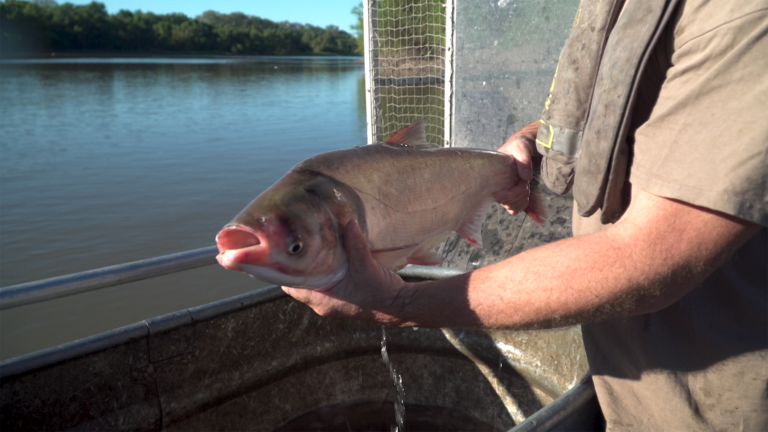The invasive fish species known as Asian carp now goes by “copi,” in an effort to get more of them out of Midwestern waterways and onto the dinner table.
Asian carp, the invasive fish species which, since the 1990s, has flourished in Midwestern waterways and crowded out native populations, has a new name: copi.
The Illinois Department of Natural Resources poured hundreds of thousands of dollars into a rebranding effort and landed on the name “copi,” to reflect the copious amount of the fish that live in Midwestern rivers and streams.
The goal is to attract restaurants, chefs, fish markets and fish consumers to buy, cook and eat what was formerly called Asian carp and, ultimately, to take more of them out of the water and onto food menus. It’s not the first time a fish species has undergone a rebrand: Chilean sea bass was formerly known as Patagonian toothfish, and orange roughy used to be called slimehead fish.
“In the Illinois River, as much as 70% of the biomass — or weight of fish — are Asian carps,” said Kevin Irons with the Illinois DNR. That’s crowding out native fish species, he said, creating more competition for food sources like phytoplankton.
The goal is to prevent the fish from entering the Great Lakes, where they could disrupt the lake ecosystem and find their way to other estuaries further upstream. Currently, Illinois has electric barriers and targeted removal efforts in place to prevent that spread.
But the fish’s reach extends far beyond Illinois, Irons said, including throughout the Mississippi River basin and the central and southern U.S.
Asian carp were initially introduced to the area to help clean up waterways, which, in the 1970s, were suffering from intense algae blooms. But some fish escaped confinement, ultimately establishing a self-sustaining population.
“This is the largest, most impactful initiative IDNR, or any other environmental organization, has ever instituted in the Midwest to control carp,” Irons said.
The ‘copi’ marketing campaign targets restaurants and markets as well as consumers of fish in an effort to create a food-based market for the fish. Some restaurants in the Chicago area are already on board, touting dishes like copi burgers and copi po’ boys.
“I think one of the best things is that it’s extremely versatile,” said Brian Jupiter, one Chicago-based chef. “You can create all these different types of dishes, but also use spices that you really like because the flavor of the fish itself isn’t gonna overpower anything.”
Jupiter said the fish has a clean flavor profile, but also has a bone structure such that deboning can be difficult. He said his favorite thing to make is copi burgers, and that he also uses copi as a binder in his crab cakes.

Ultimately, the copi marketing team hopes the new name will get FDA approval. One of the requirements for the agency’s approval is widespread use of the new name, according to the team. So, for now, both names — copi and carp — will appear on packaged goods.
Some environmental groups have expressed disappointment that the department is spending $600,000 on a rebrand rather than on river health restoration.
“Illinois DNR needs to focus on restoring habitat in and along rivers and reducing pollutant loads rather than guessing at the public’s eating preferences,” wrote Robert Hirschfeld in a blog post for the environmental group Prairie Rivers Network.
Some states, including Missouri, have opted out of the new name. Others, though, see this as a good starting point, including long-time carp researcher Joe Parkos with the Illinois Natural History Survey.
“We need to remove as many of these fish as possible, so you can consider this one tool in the toolbox,” Parkos said.
Follow Dana on Twitter: @DanaHCronin This story was produced in partnership with Harvest Public Media, a collaboration of public media newsrooms in the Midwest. It reports on food systems, agriculture and rural issues. Follow Harvest on Twitter: @HarvestPM.
9(MDM5MjE5NTg1MDE1Mjk1MTM5NjlkMzI1ZQ000))

